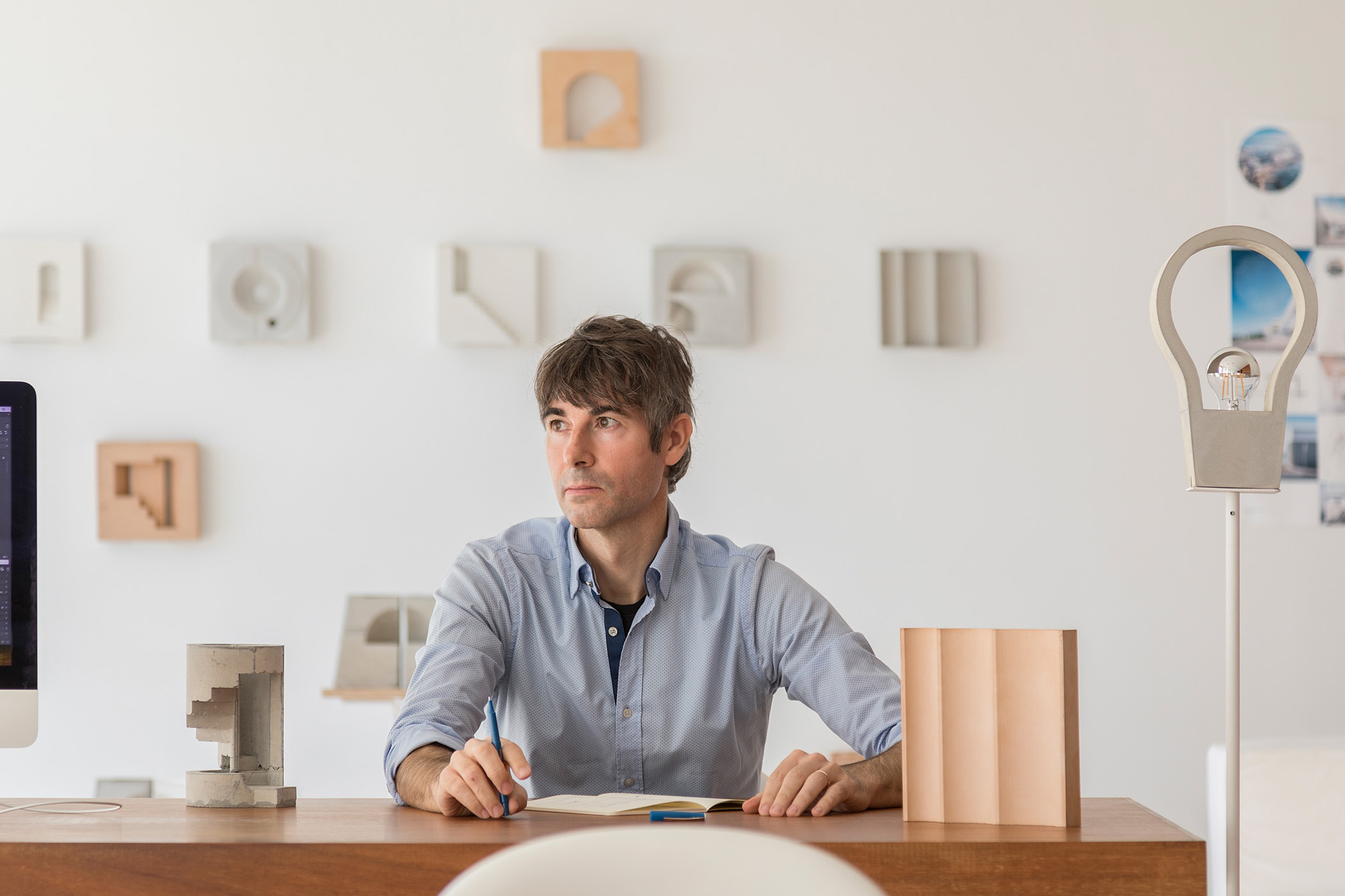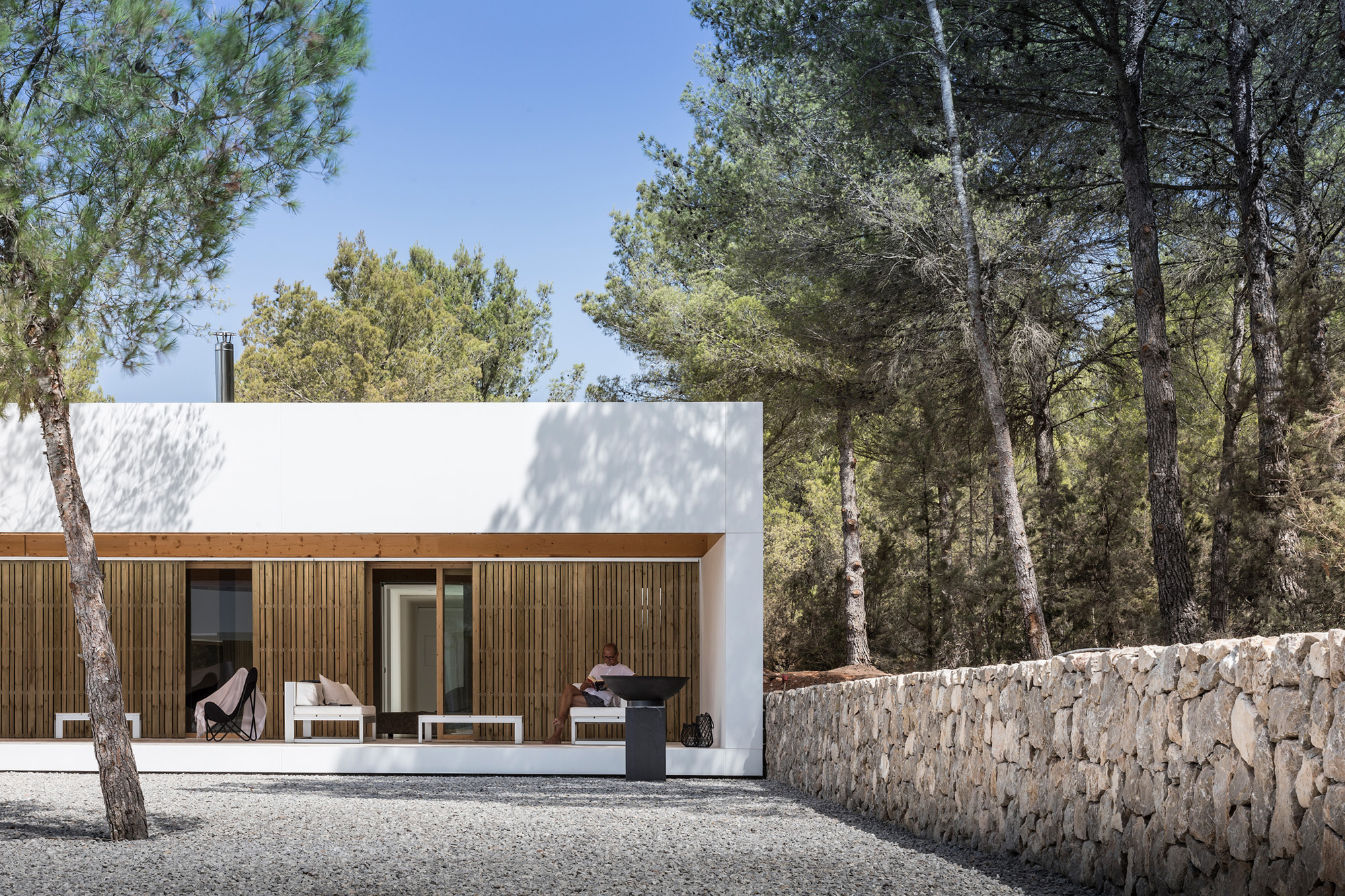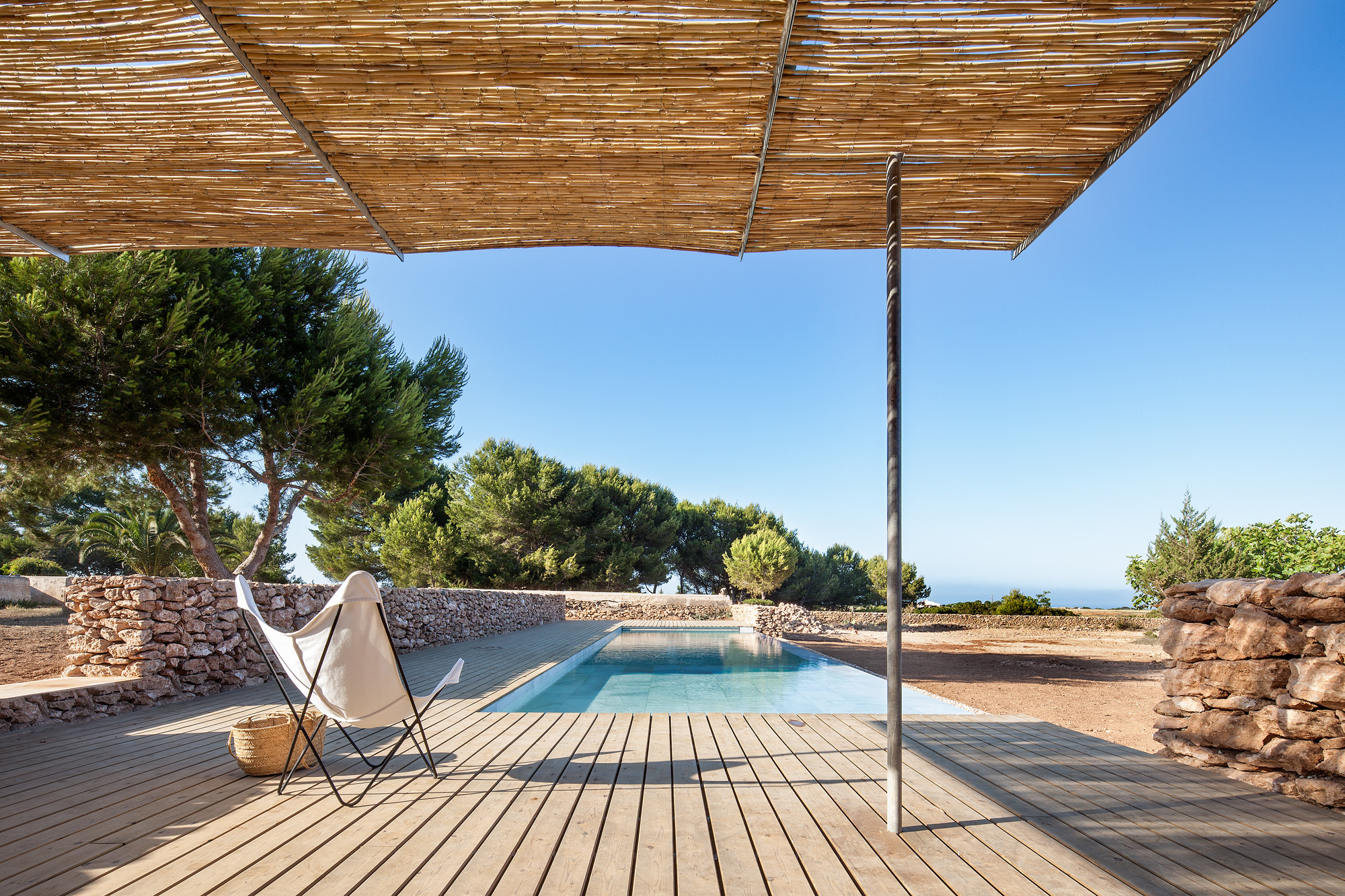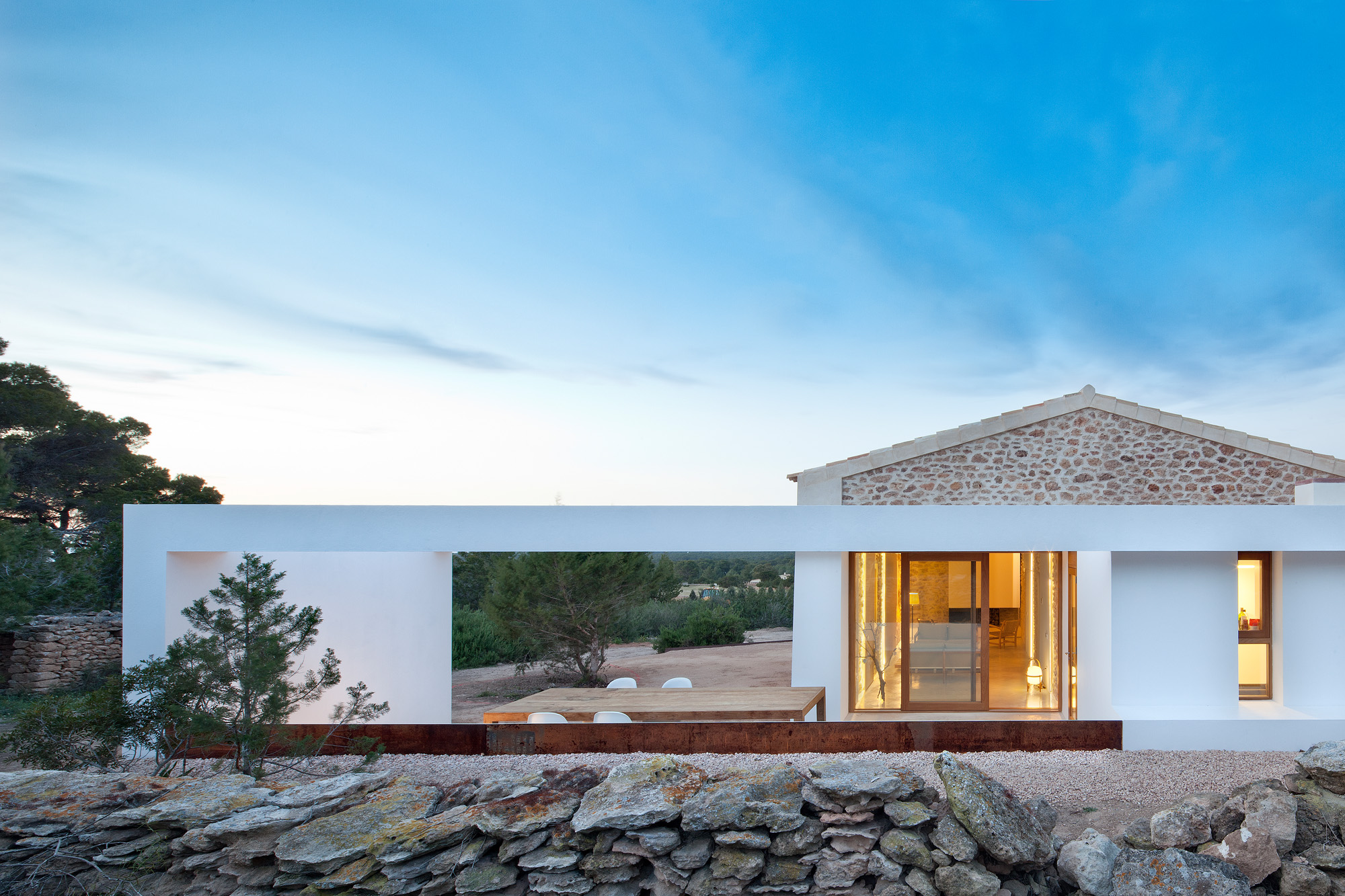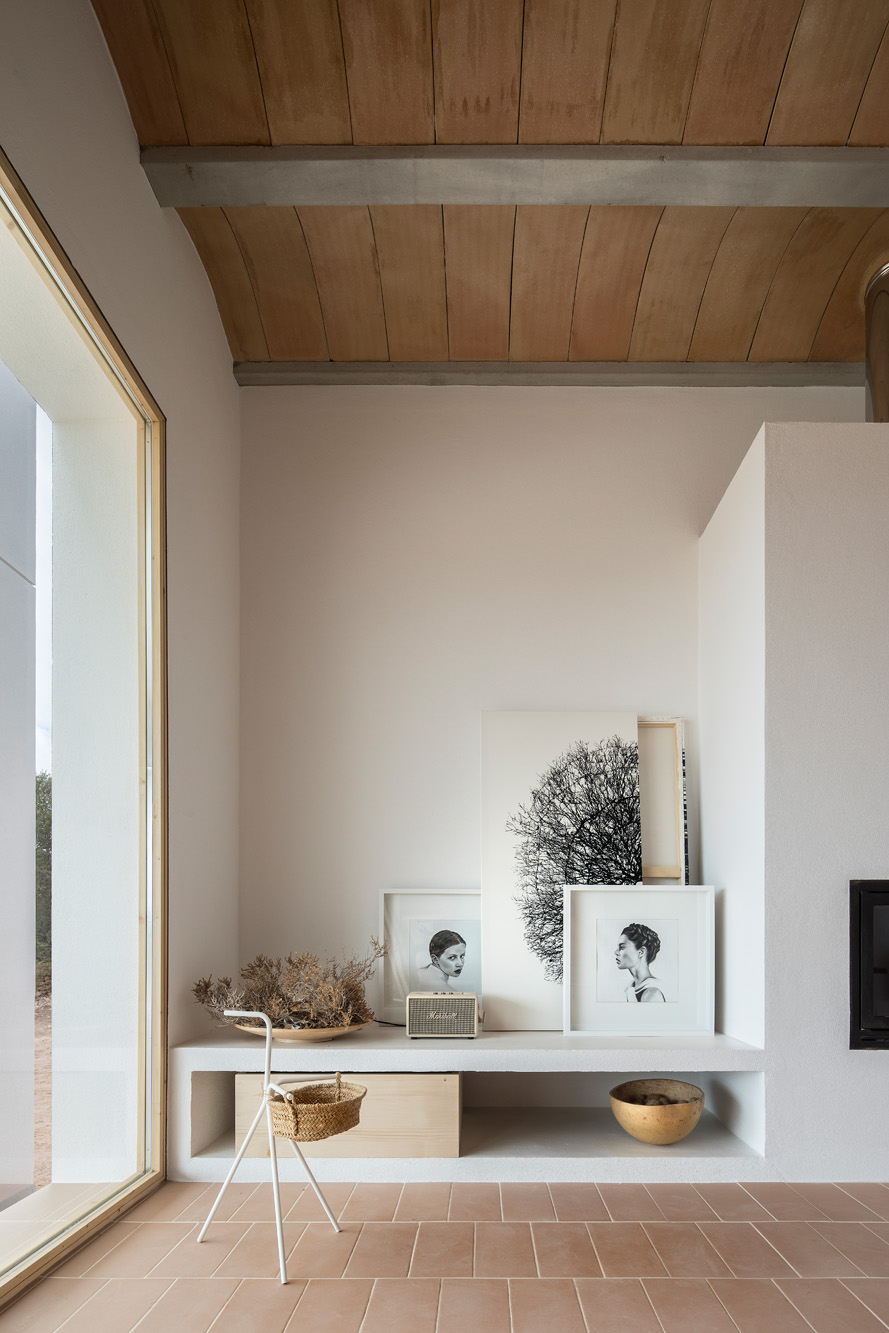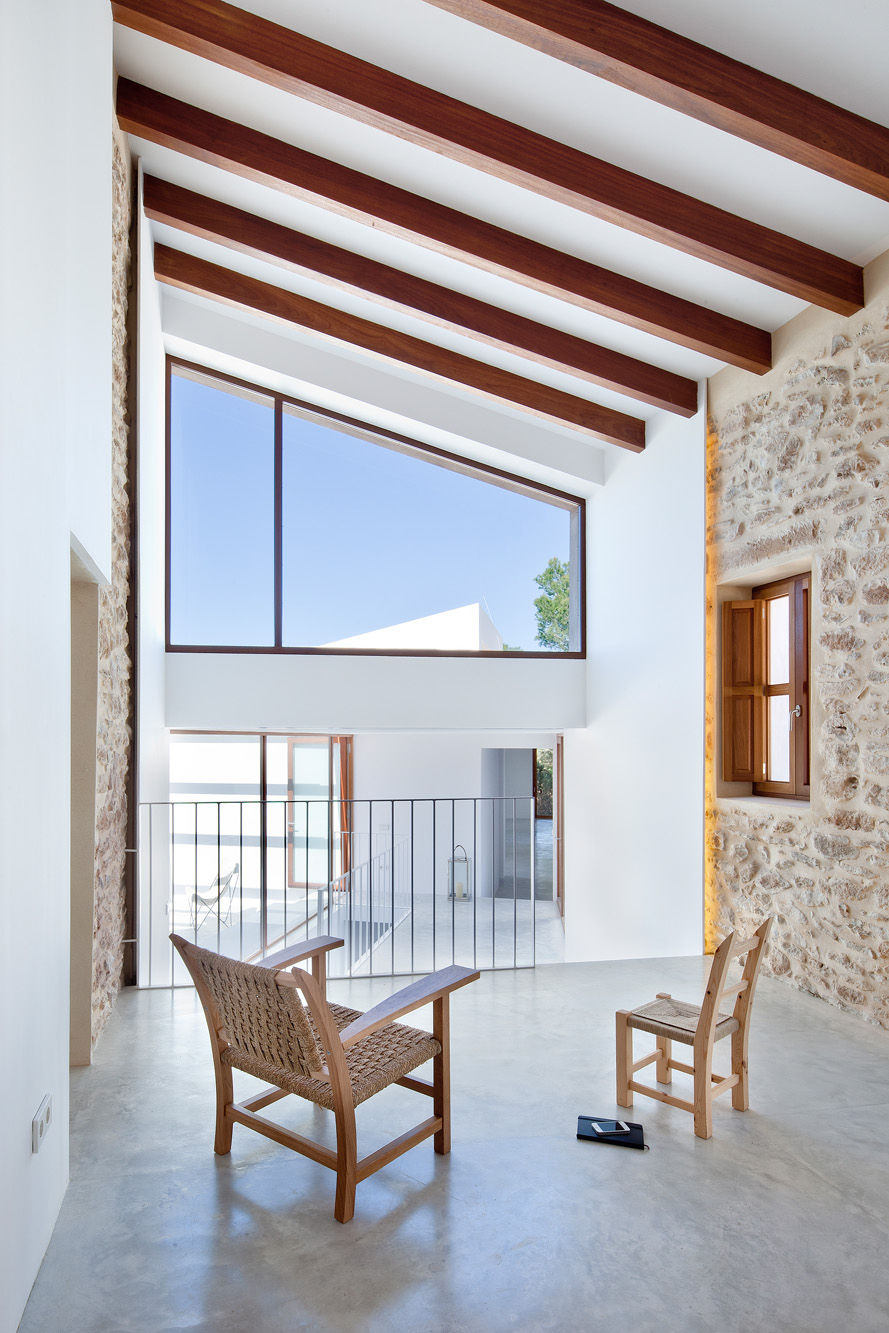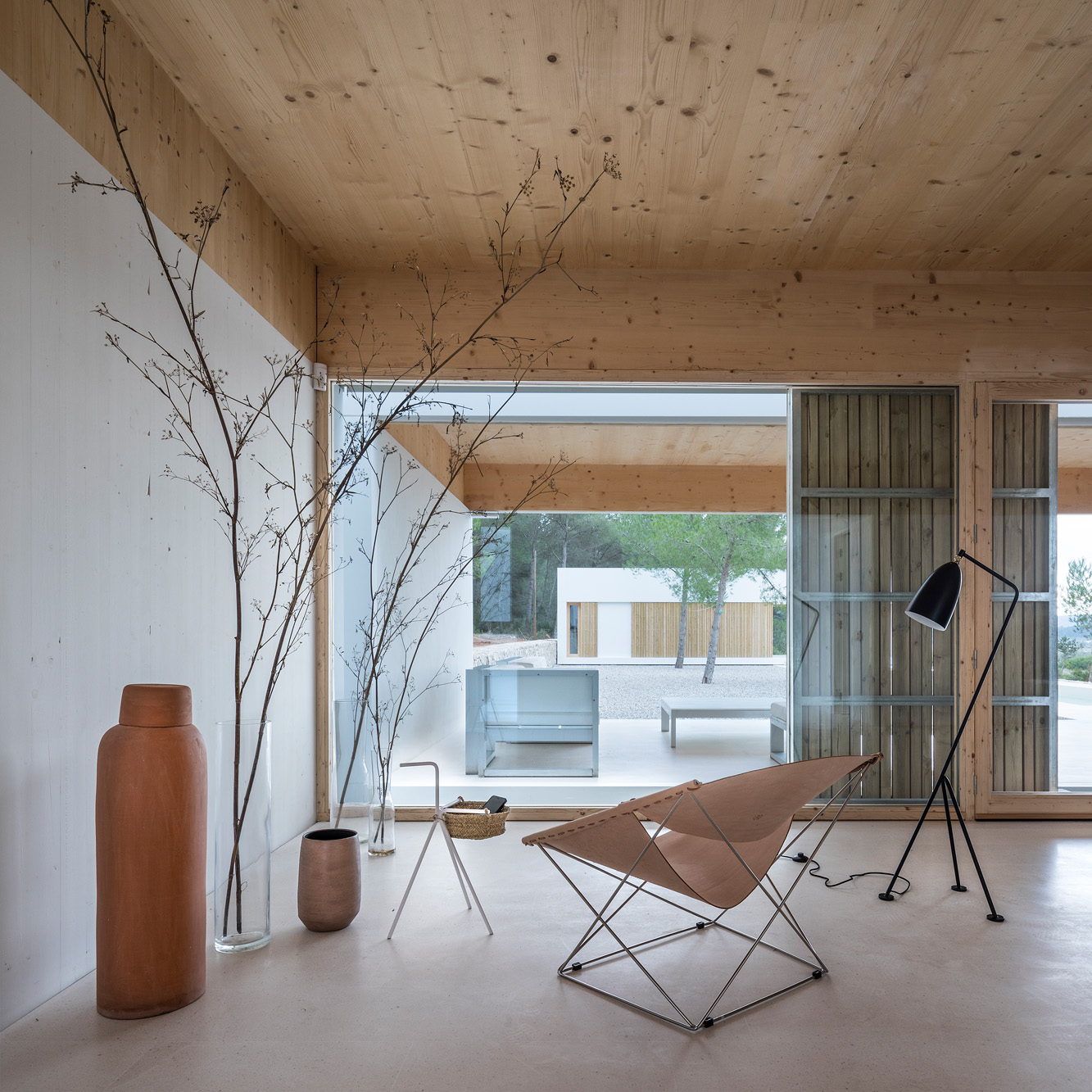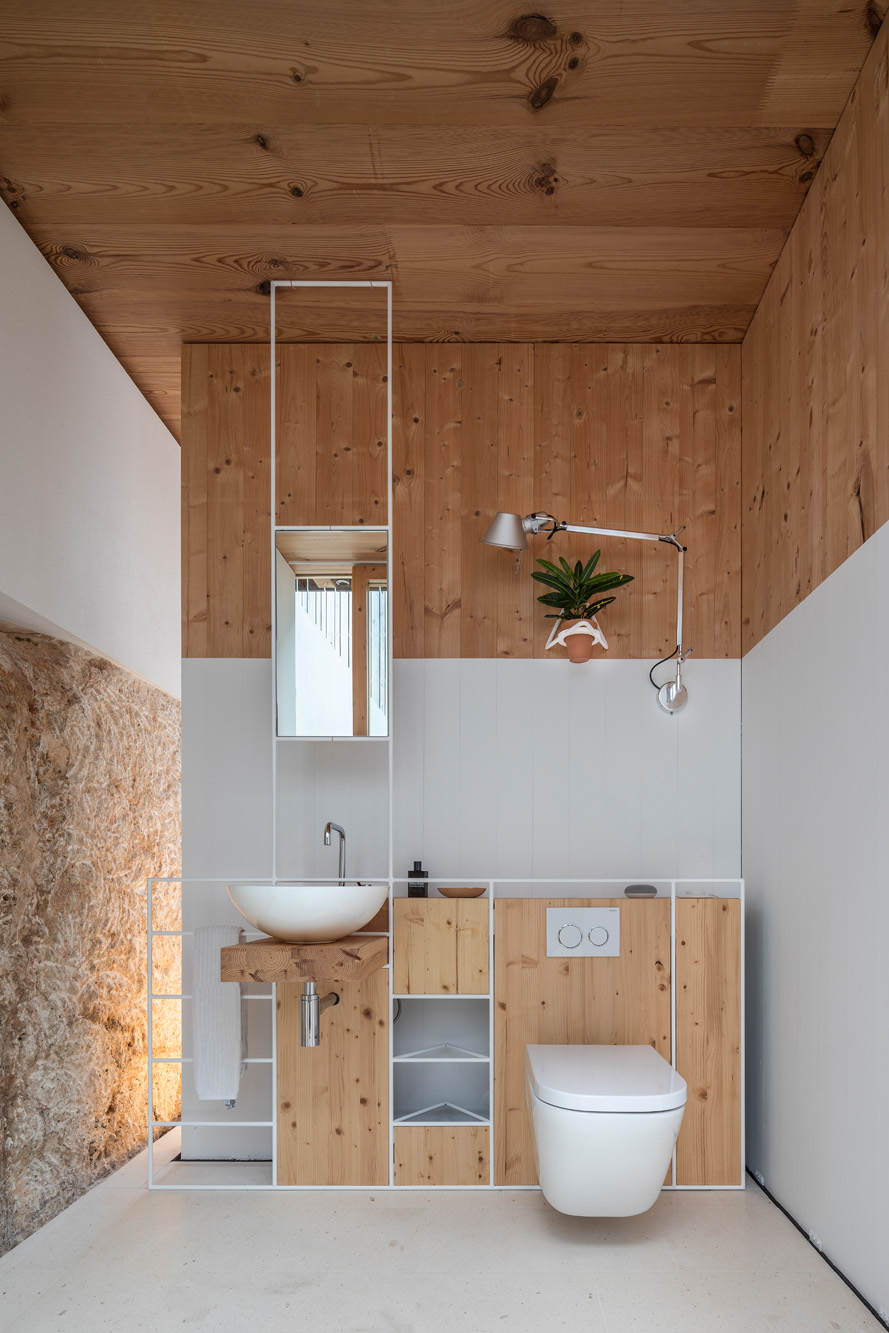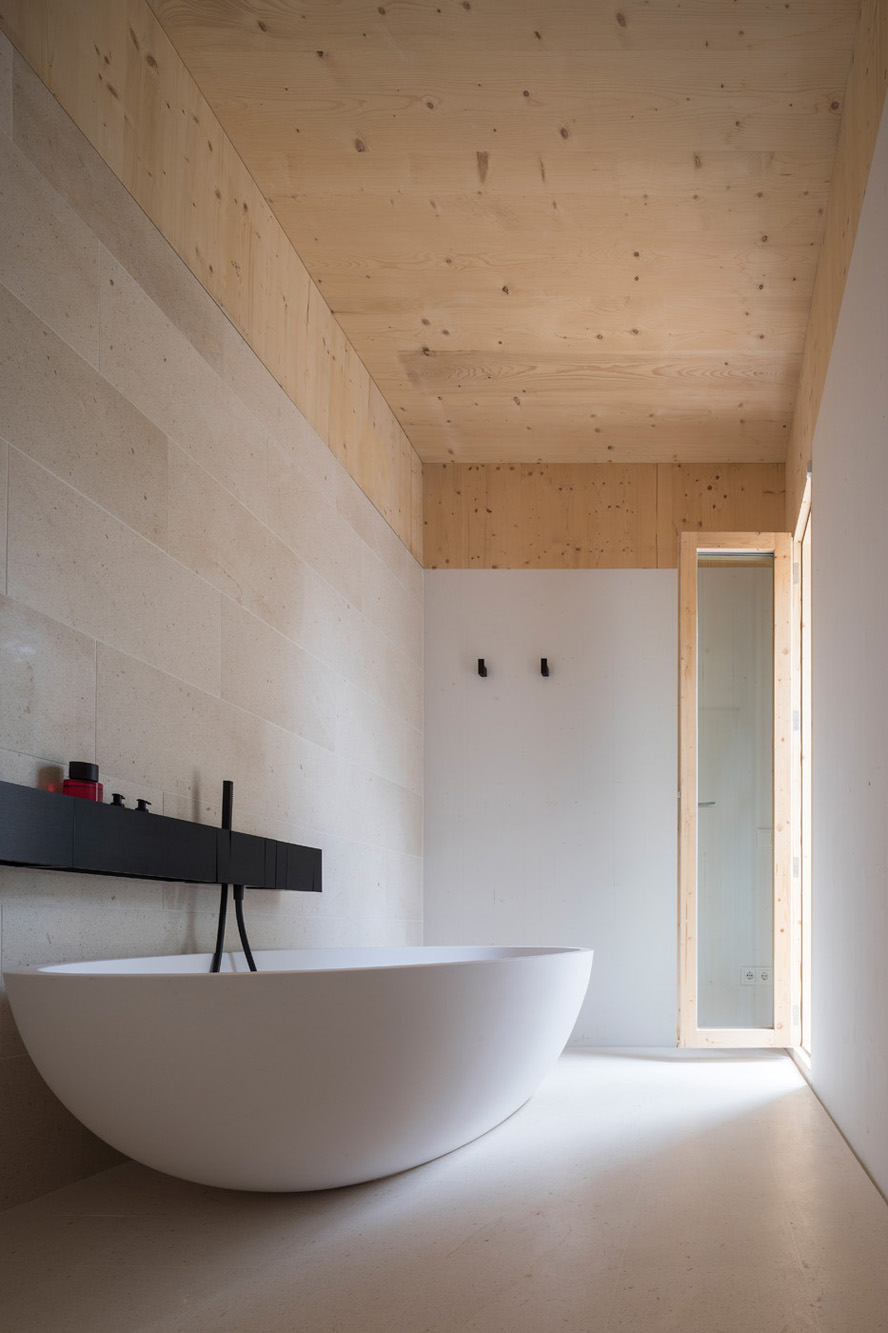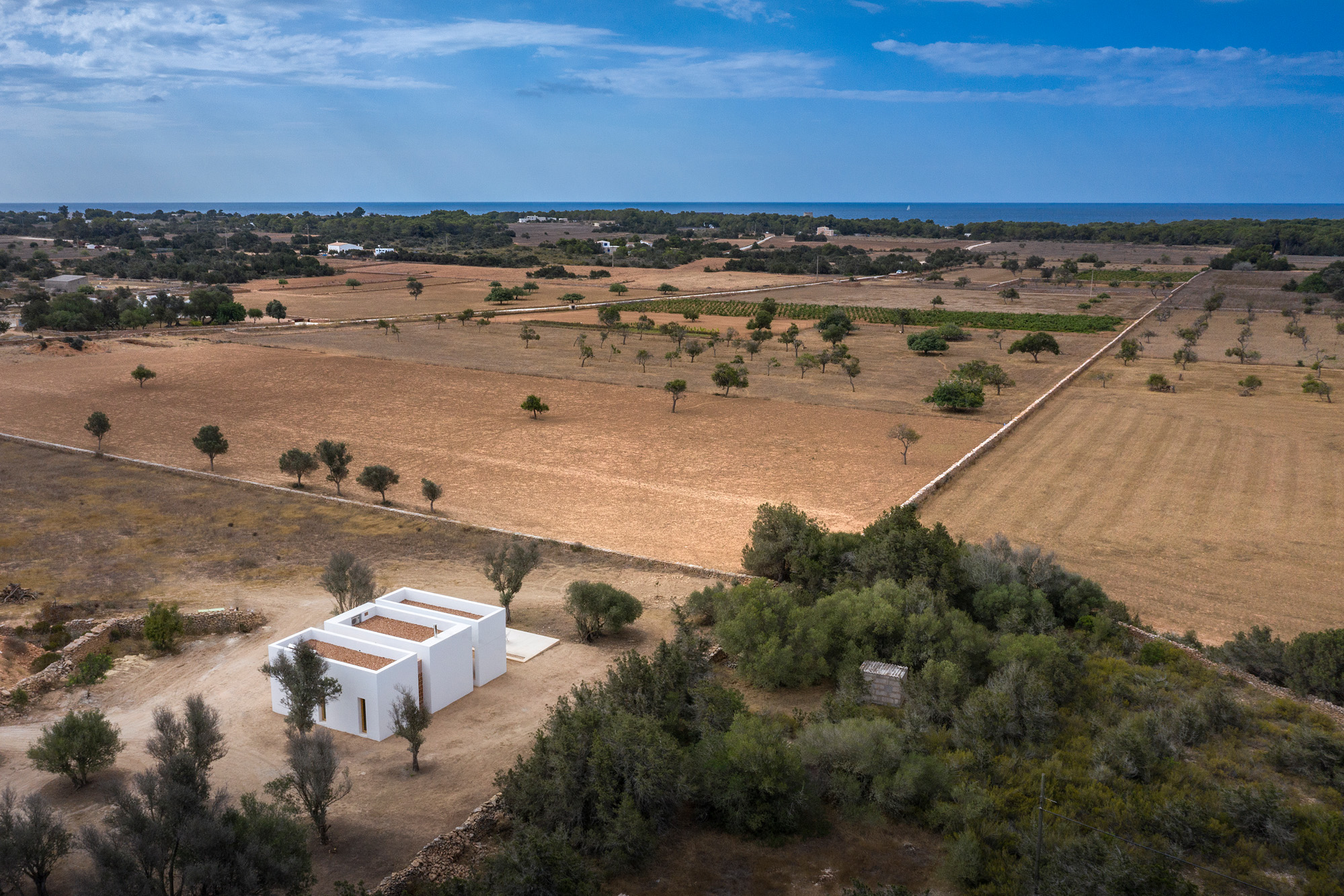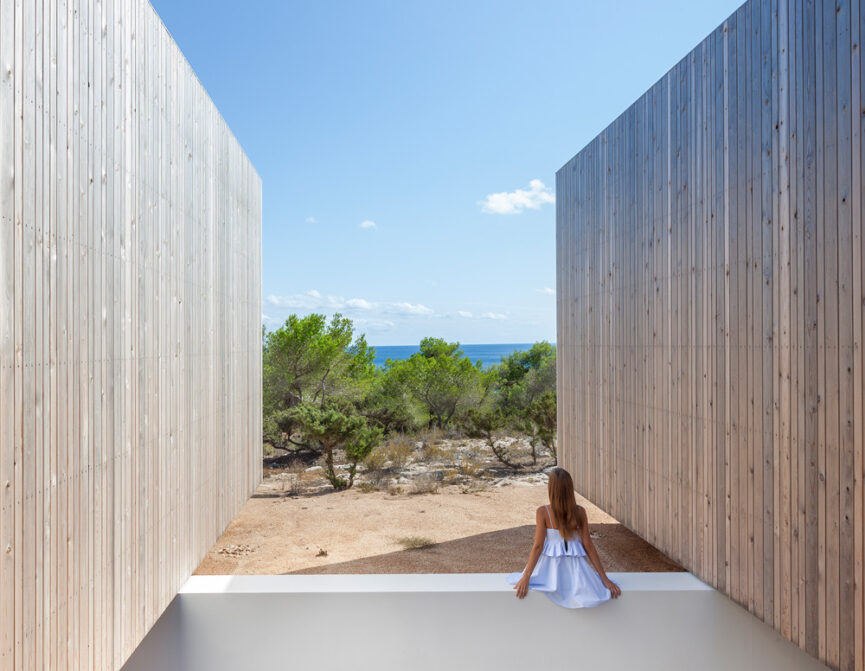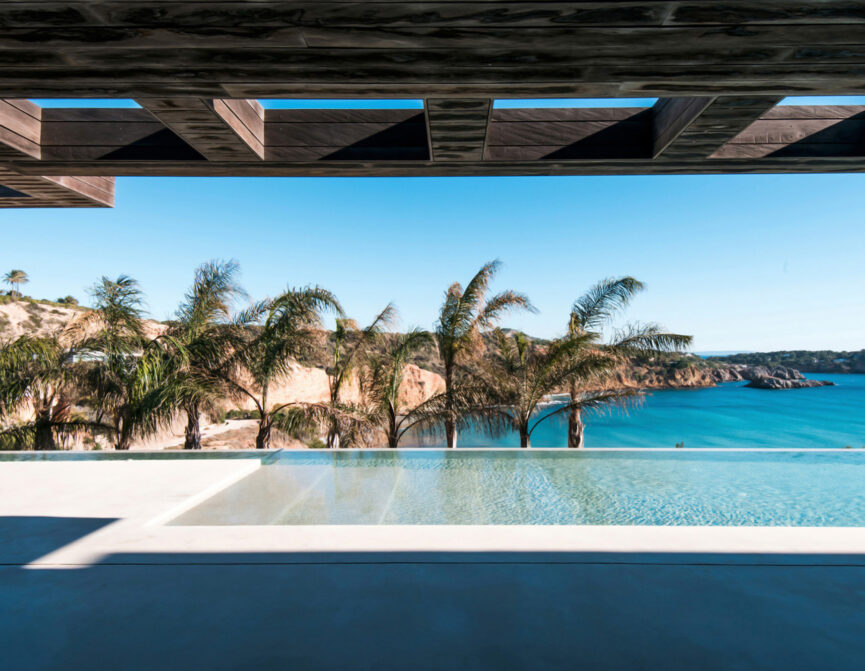Considered design intersects with nature in Formentera, using its location as inspiration for unusual architectural solutions. Marià Castelló discusses the ideas that drive him.
Surrounded by gin-clear waters and powder-white beaches, Formentera is one of the smallest Balearic Islands. Time seems to stand still here; days are spent between the UNESCO-protected coastline, white-stone villages and cliff-edge lighthouses. Further inland, there’s sprawling farmland and scattered forests. It’s here that architect Marià Castelló spent his childhood, and it’s Formentera’s picturesque landscape that drew him back to the island years later to set up his namesake practice.
Opening the doors to his architecture studio over two decades ago, Marià is committed to preserving Formentera’s authentic character amid growing urbanisation. “I was born and bred on Formentera, so my bond with the island has always been strong,” the architect smiles. “After finishing university in Barcelona, I was brought on board to help with a couple of private and public projects. Once I heard the proposals, I knew I wanted to return.”
These projects turned out to be formative, shaping his sensitive and reflective approach to residential architecture. Signature traits of Marià’s work include buildings that are deeply connected with the landscape, respectful of local culture and reflective of a location’s history. Leaf through images of Es Pujol de s’Era and it’s easy to gather the direction of his practice. The blueprint of this minimalist home is guided by a fluidity between public and private, interior and exterior in a way that its inhabitants can discover different perspectives of the surrounding agricultural landscape.
Since setting up Marià Castelló Architects, the architecture studio has gone on to realise residential architecture across Formentera, Ibiza and mainland Spain. Yet, it’s the distinctive identity and rich history of his native land that Marià is undeniably pulled to. Undergoing several years of occupation by civilisations from the Arabs to the Byzantines before becoming a Spanish territory, Formentera was heavily hit by the Spanish Civil War.
Then, in the 1960s, its laid-back atmosphere and unspoiled landscape enticed the hippie movement of the era. Today the island is still known for its free-spirited personality but its long swathes of cerulean beaches, charming chiringuitos and farm-to-fork restaurants have been put firmly on the radar. This led to a surge in what Marià refers to as poor-quality construction.
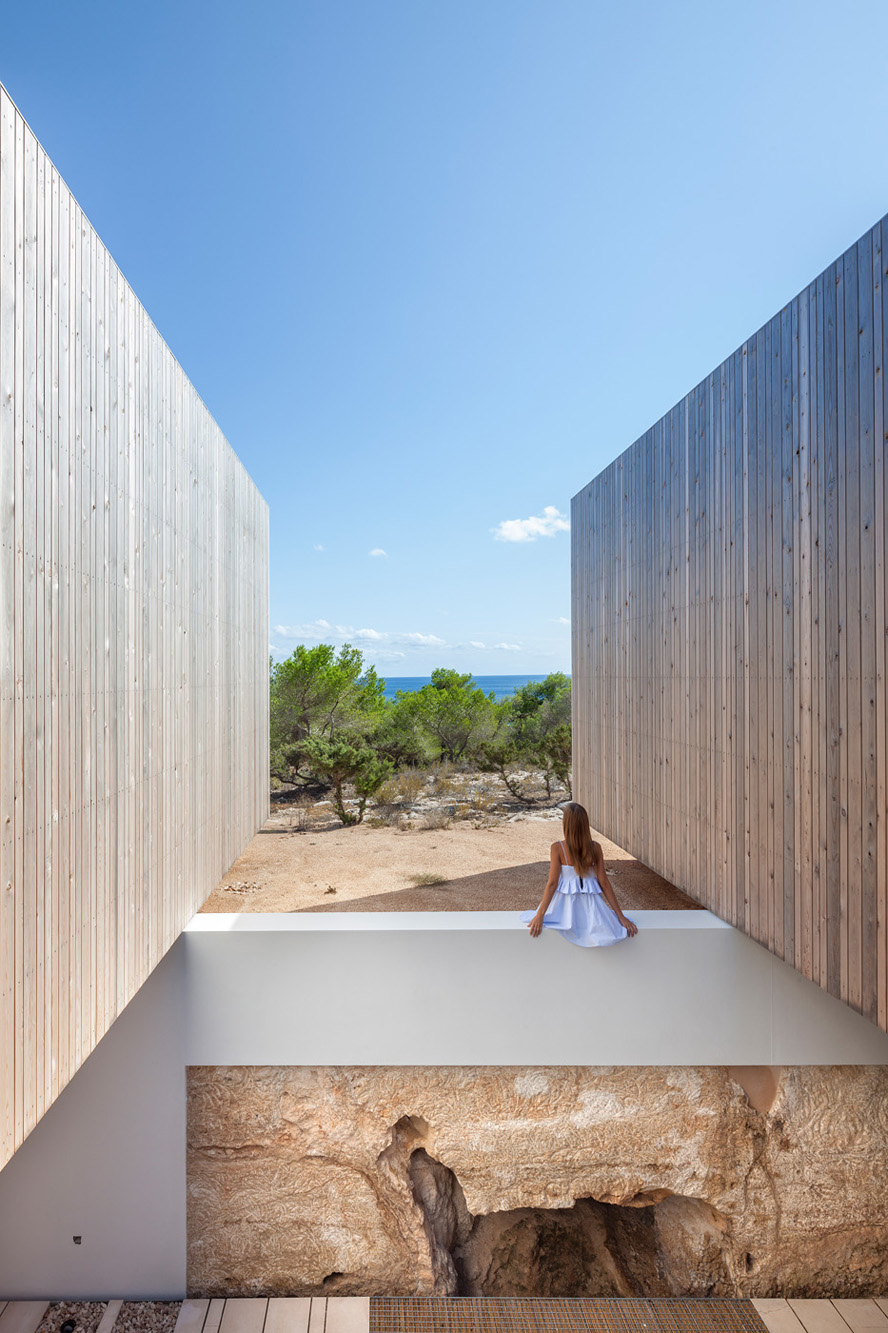
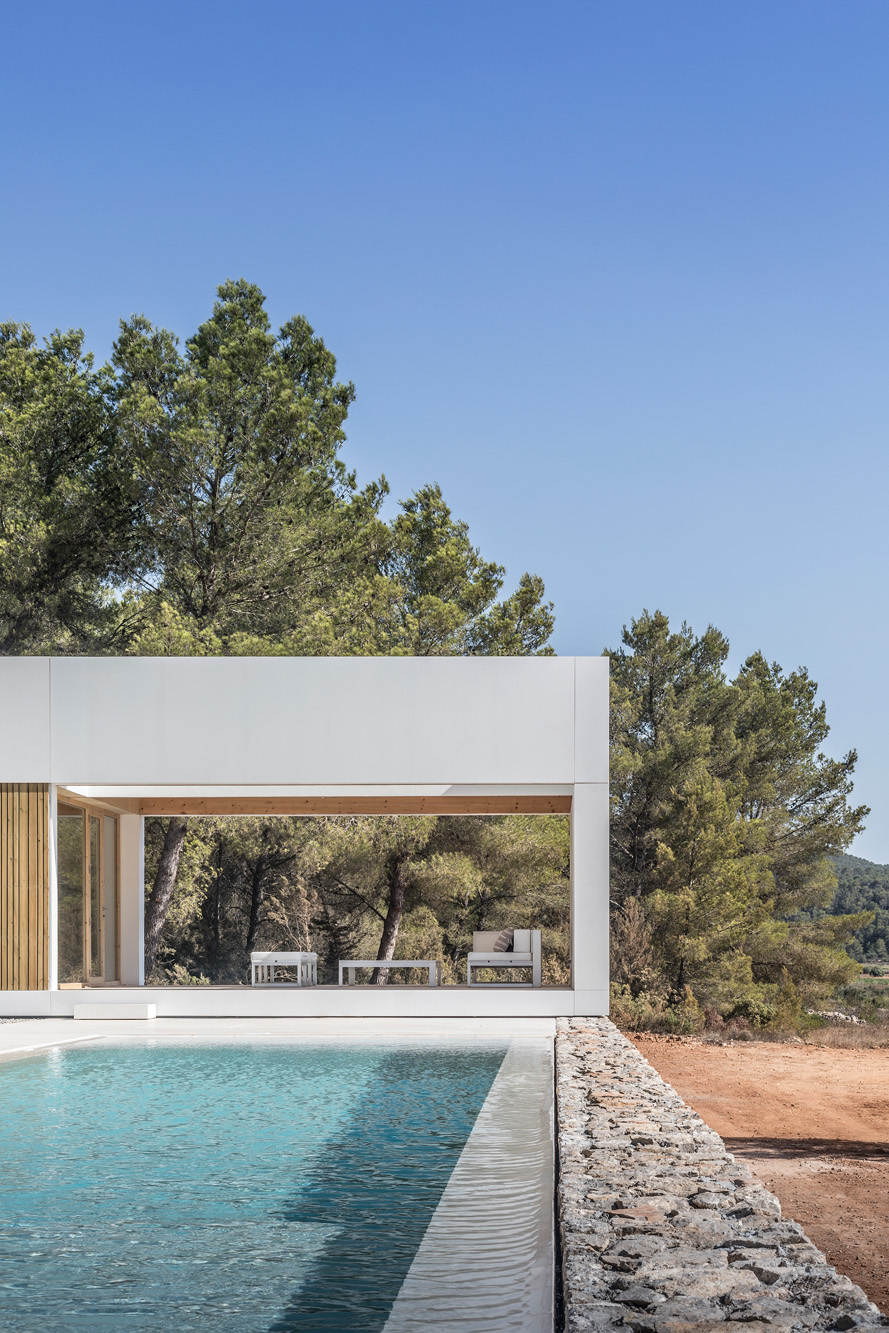

Rather than replicating what existed centuries ago, Marià believes that modern architecture can be rooted in its past in a way that builds upon and enriches its heritage. “I prefer constructive and conceptual sincerity because I want to avoid the trap of imitative or disloyal architecture,” he says, adding that modern architecture should not only blur boundaries between inside and out but between new and old.
To pioneer this sentiment, Marià says, designers need to embrace a sensitive and attentive approach. The process should begin with a thorough analysis of the site, examining its idiosyncrasies, pre-existing conditions and orientation. Sustainable design should be woven into the plans as much as possible – Marià suggests finding inspiration in the way of life on the island pre-1960s when a circular economy and self-sufficiency were the norm.
Formentera may be considered Ibiza’s “little sister”, but Marià points out that the island has its own singularities that influence the design of its buildings. “One of the main differences between Formentera and Ibiza is the topography. Ibiza is characterised by being mountainous and Formentera is very flat. This, without a doubt, conditions the landscape and the architecture.”
Asked about the qualities of traditional architecture on the island, he highlights the use of local materials and simple low-slung geometries as markers of the more traditional villas in Formentera. “Calcareous stone, lime mortar, pinewood and vegetable fibres were commonly applied, and a continuous indoor-outdoor connection was essential. Water is the most precious asset and vernacular architecture always pays homage to it,” he adds.
Formentera can only be reached by boat but for Marià, its remoteness is a catalyst for out-of-the-box architectural solutions. “Isolation for me represents more of an opportunity than a limitation. It can be challenging to source materials locally because the sandstone quarries have closed and we can’t turn the native wood into construction material, but we find ways to make it work.”
I prefer constructive and conceptual sincerity because I want to avoid the trap of imitative or disloyal architecture.
- Marià Castelló
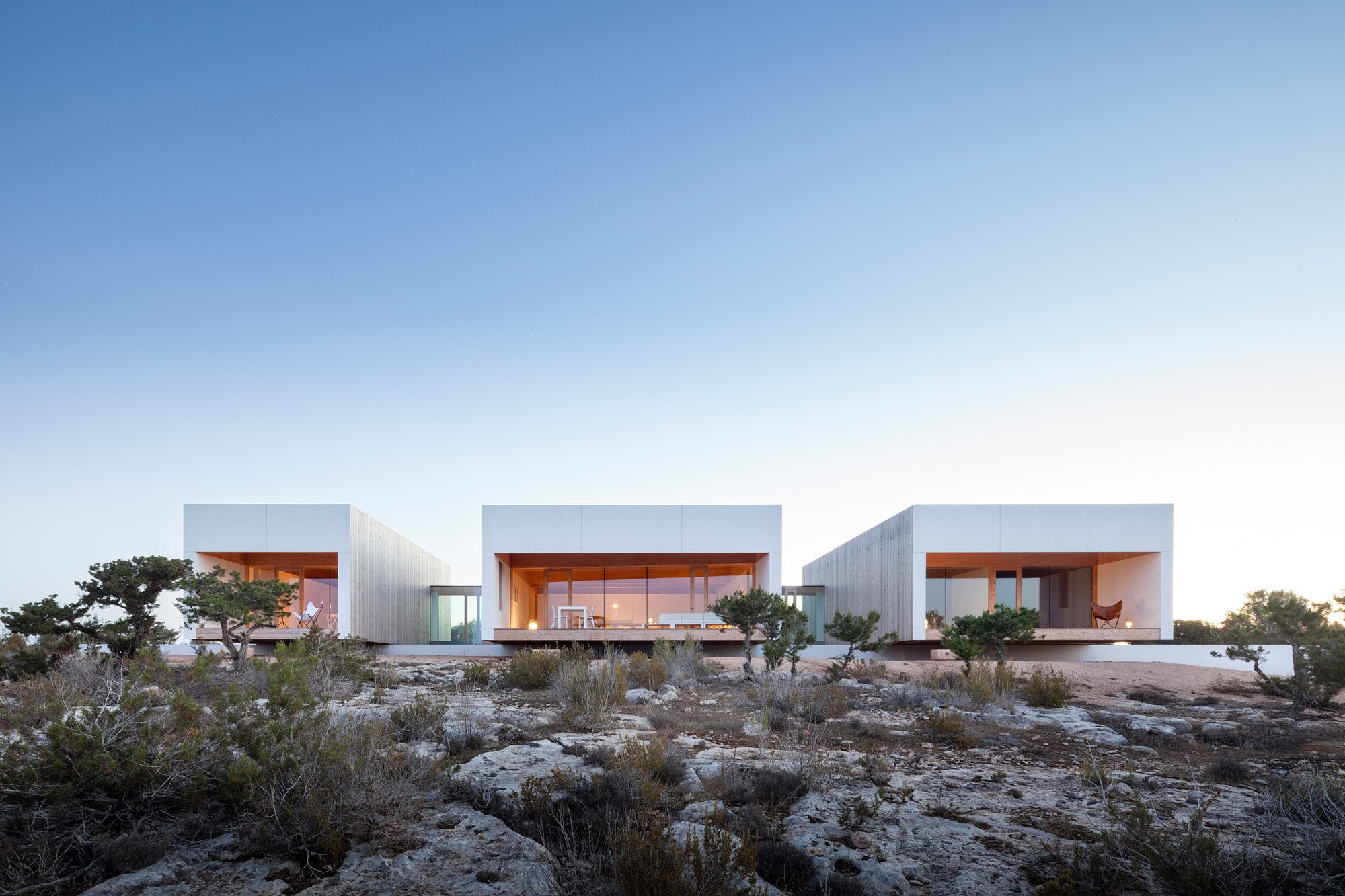
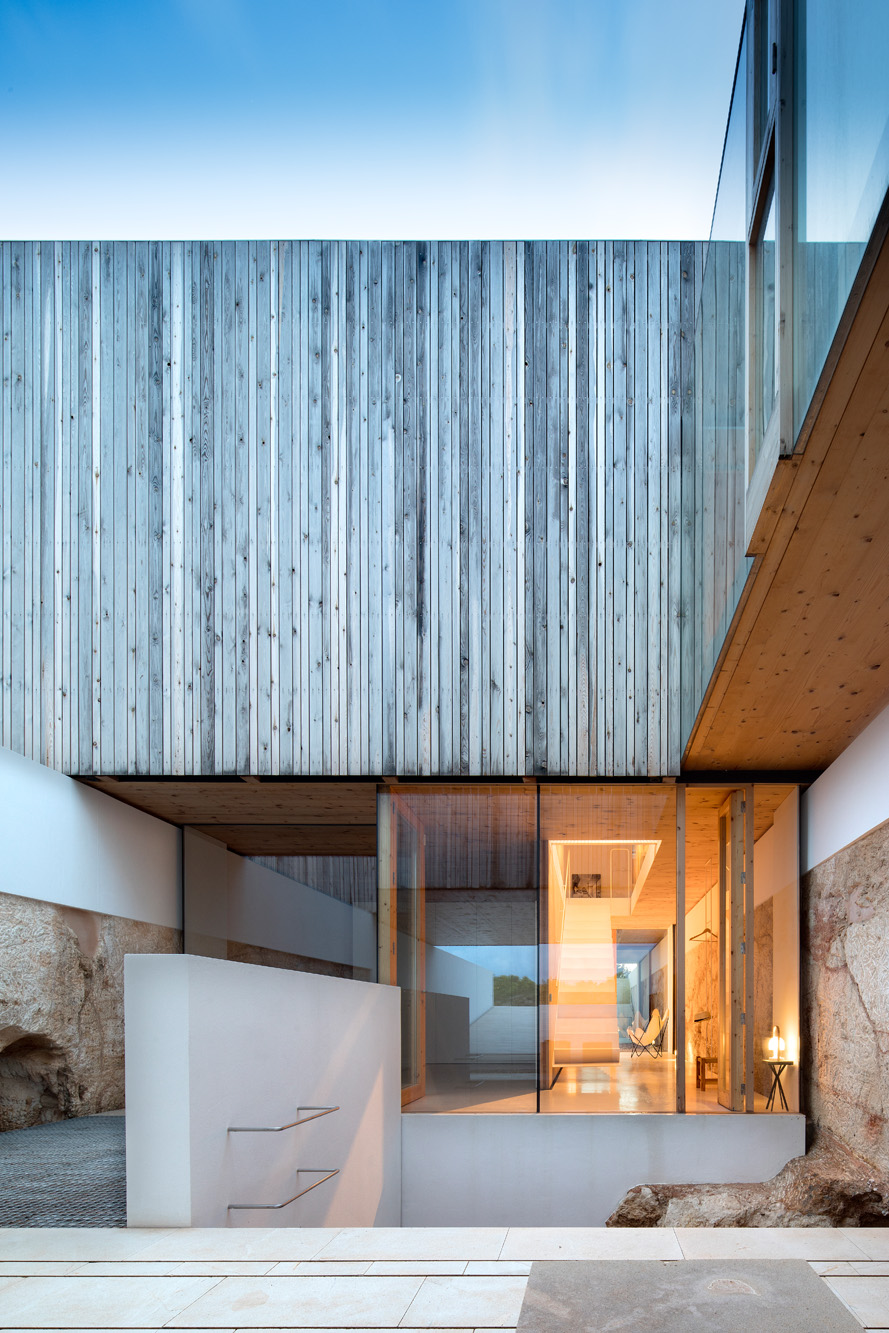
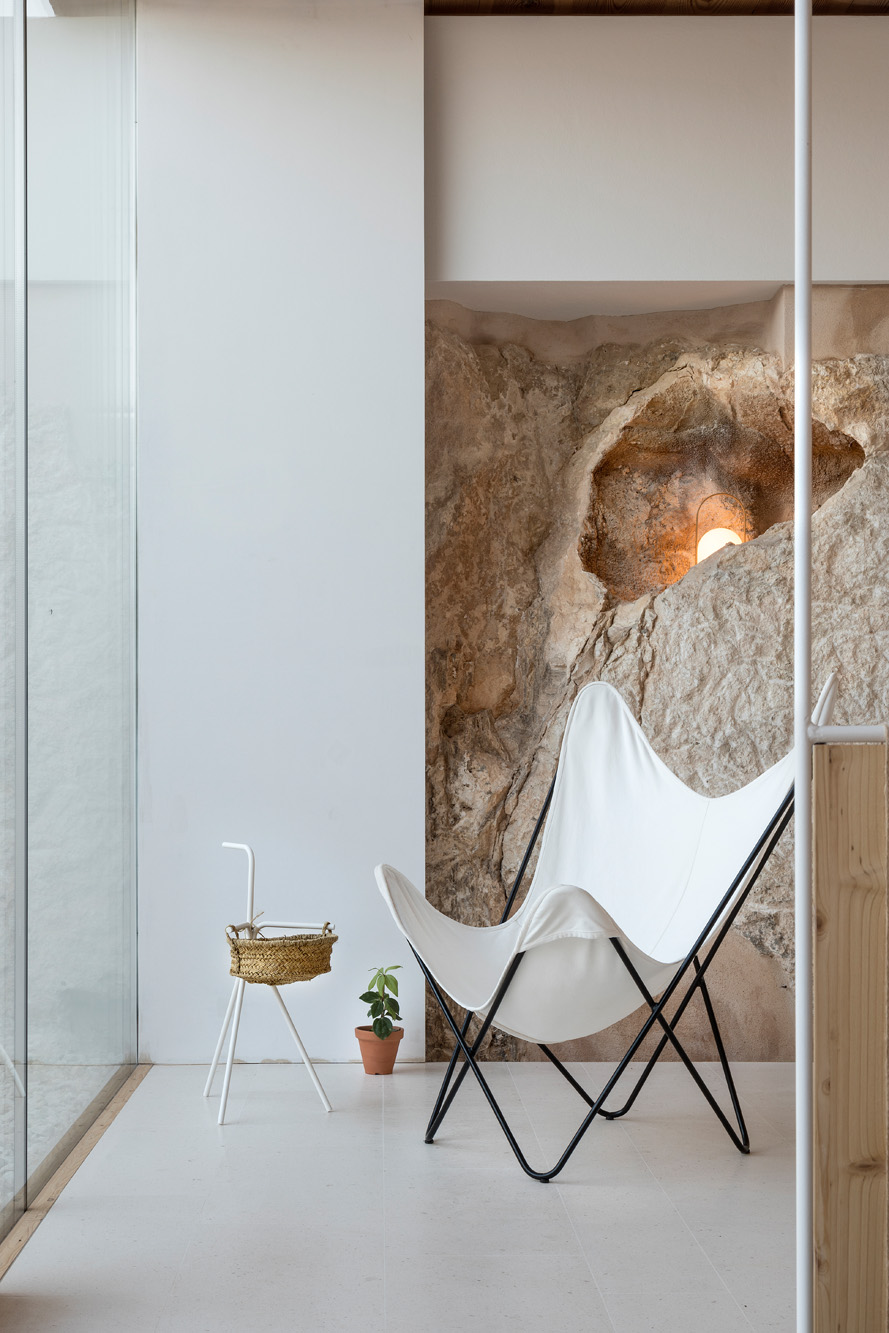

Naturally, Marià refers to his network of artisans as a way around these conditions, choosing to either source furnishings from skilled tradespeople or custom make his own: “I meet and work with skilled carpenters, blacksmiths and masons. I always try to learn as much as I can from them.” His Es Pou project, for example, involved sourcing wood and rattan furnishings from virtuoso makers. Es Pou is certainly a home that proves just how creative residential design on the island can be without disrupting its immediate environment.
This single-storey two-bedroom home is divided into three rectangular volumes that vary in size according to their relationship with the landscape. Earthy, warm interiors echo the surrounding oat and wheat fields. Glass doors let you gaze across the farmland dotted with almond and fig trees.
Similarly, Marià’s D12 Collection of pieces for outdoor furniture and accessories brand Diabla was initially created as a tailor-made solution for his Bosc d’en Pep Ferrer project. There’s a parallel dialogue between old and new, interiors and exteriors, light and shadow in this three-volume home that sits on top of an excavated cavity.
Shifting perspectives from the past to the future, Marià hopes there will be a rejection of urban growth on Formentera at a political level. He believes there should be a collaborative effort to protect the island’s precious history, landscape and ecosystems, to reimagine architecture that is first and foremost kind to the environment. “In this new scenario, all of society and, of course, architects, would have the challenge of transforming and improving everything that has been done quickly and without much thought during the decades of hasty development,” he says. “It would be a real opportunity for change.”


